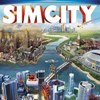 Game: SimCity
Game: SimCity
Developer: Maxis
Publisher: Electronic Arts
Available on: Windows PC Only
A small boy sits in a darkened room, the only light coming from the cathode ray tube monitor that sits atop an old wooden desk, the computer it is connected to a donation from a family friend. Sporting an Intel 80486 processor clocking in at a poultry 66Mhz, and packing 8mb of RAM, the machine was long in the tooth even for the time. The boy whiles away hours and hours playing on this rickety old computer, exploring Windows 3.1x and tinkering with DOS. DooM, Jazz Jackrabbit and Fuzzys World keep him busy but there is one DOS command that was entered more than any other: C:\games\simcity2000.
The boy was me and the year was 1996, SimCity 2000 started a lifelong love affair with the SimCity franchise, with each iteration leading to hundreds of hours of time invested into creating the perfect city. SimCity 3000 brought bigger maps and the freedom to do more, with SimCity 4 adding countless ways to create a city in near impossible landscapes and settings. Here we are then, a week after the retail release of the new SimCity, which you could say didn’t go exactly to plan. The server issues that have plagued the launch of SimCity have been well documented, and for the most part SimCity is now stable and playable at all times, so this review will be focusing on the game as just that, a game, and I will be putting the infrastructure that supports it to one side for a moment.
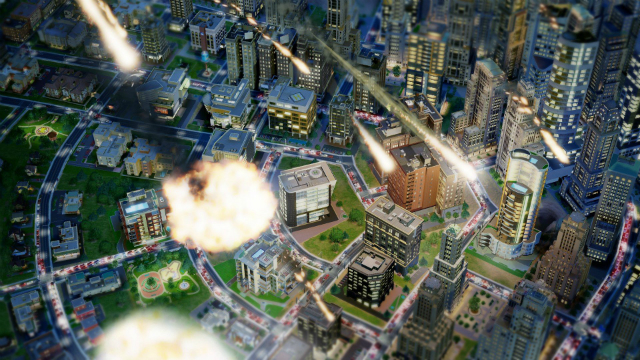
GRAPHICS: SimCity is the first game in the franchise to be fully realised in 3D, with the games that came before it being variations on a 2D isometric theme. Modern graphics technology allows us to be treated to fully realised cityscapes, with every facet of the game world right there for you to zoom in and rotate around for a closer look. SimCity has never aimed for an ultra realistic look, and the same can be said for this newest iteration, with the objects that populate the screen sporting a sort of playful cartoon finish. You won’t find a game that is sporting super high poly buildings, everything is kept relatively simple, but that being said, when you’ve built a large city that supports a densely packed population the amount of objects shown on screen at once is mightily impressive.
The number of unique buildings in SimCity is staggering. I burned through four different cities in a matter of days and each one of them offered up as yet-unseen architecture to boggle at. Zoom on down to street level and you will notice the street traffic, with literally thousands of cars, bikes and trucks going about their business. Take a look at the sidewalk and you will notice the many Sims doing whatever it is that they are doing, click on any one of them and you get a read out of where they’ve been and where they are going on an easy to read popup screen. The menu layout is easy to get your head around, with big buttons representing the most important functions, and the rest of them colour-coded for good measure.
When building and laying down zones, SimCity’s Glassbox engine shows handy overlays that show the nature of the zone you have laid, suggested road routes and details about your power and water supplies that I will touch on later. If you have the PC to turn things up to eleven, SimCity is a wonderful spectacle.
SOUND: One of my stand out memories from past SimCity titles is the games signature New Age and live Jazz soundtrack. I know what you’re thinking, Jazz? Really? Sounds naff. Well, no, actually. I’m no Jazz fan but I can’t think of another genre of music better suited the SimCity than Jazz. It’s tempo and upbeat nature keep things ticking along just right. SimCity’s music is dynamic, changing with the times, affecting the mood. If your city is thriving, the score stays upbeat, if your city is floundering, the music becomes deep and brooding. The soundtrack count is a little on the low side, but SimCity just wouldn’t be SimCity without the Jazz, so you won’t find yourself turning it off anytime soon.
The jazzy tunes are backed up by all the sounds of the city. At street level you’ll hear the sound of city traffic, their horns beeping and engines revving. Sirens sing their haunting song, industry grinds and clatters in the distance. Every building type has its own, sometimes unfathomable sound when clicked. I found the games sound bank became annoying after long play sessions, but they were particularly long play sessions.
GAMEPLAY: SimCity is still the SimCity you know and love. In fact, those of you that have played a SimCity game before will take to it like a duck to water. You still start with an empty chunk of land, and it is your job to turn this empty landscape into a thriving urban powerhouse. You must manage taxes, provide public services and negotiate many pitfalls on your way to mayoral glory. So does SimCity bring anything new to the City Hall negotiating table? The short answer is yes.
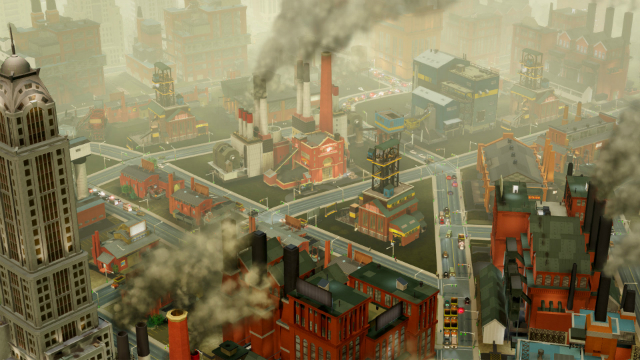
The long answer is that you shouldn’t expect a revolution. There are a number of interesting additions to the SimCity formula that add up to enough of a change in gameplay terms to make the game feel like a fresh and worthwhile experience. Top of the list of changes is city specialisation, something that you are encouraged to do from the off when you are introduced to the game via a very well put together tutorial section. City specialisation allows you to focus your city on one of six money spinning disciplines: Mining (for Iron Ore or Coal), Drilling (for Oil), Trading, Electronics, Gambling and lastly, Tourism. You can, of course, combine a number of the above, mining goes hand in hand with trading, the same can be said for gambling and tourism. Each specialisation comes with its own positives and pitfalls, and finding the right balance will be a difficult task even for the veteran SimCity player.
The tale of the town of ‘Saafamton’, one of my first attempts at becoming a success in SimCity, was one of immense highs and frightening lows. I chose a location with plenty of mining resources, the plot of land was bulging with Iron Ore. Before long I had a thriving city under my belt and I set about developing the technology necessary to turn my raw iron ore into metal so that it could be exported. I made millions of simoleans, as I left the game to run whilst I went to the pub, happily spending the whole lot upon my inebriated return. Then the ore mines ran dry. There was no more ore. Which meant I could produce no metal to sell on the global market. How would I support my massive city, its state of the art mass transit system, huge police force and burgeoning University? It was all downhill for Saafamton from there, I just couldn’t save the sinking ship, my foolhardy spending in the good times was ruthlessly punished.
Three cities on and I still haven’t found the right balance, my latest effort, Toothbrush Town, sports a mixture of mining and tourism, a mix that causes huge fluctuations in wealth and poverty across the city map.
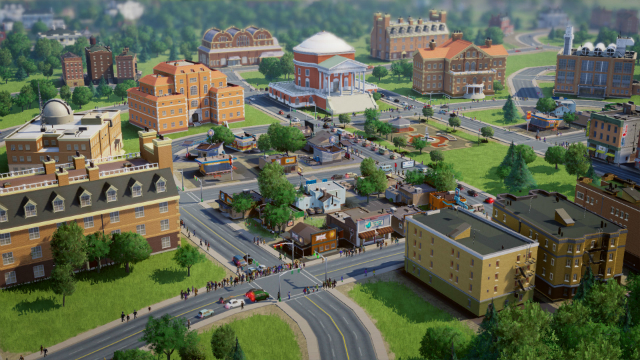
SimCity’s other big trump card is the addition of a more well rounded regional play system (as first seen in SimCity 4), with which you are able to create multiple connected and specialised cities within a wider area. You can choose to go it alone or invite a friend to be your-mate-the-mayor, exchanging resources and simoleans at will. Under the hood the Glassbox engine allows you to see what is going on in the region/city with mind boggling detail, with beautifully laid out data maps available for land value, ground pollution, radiation, wealth, density, crime and many more besides.
All of the above make SimCity a great game to play, one of the PC’s true raison d’etre, but then you hit a wall. An invisible wall. The map boundary, which is the limit Maxis have placed on city size in this latest SimCity. Just when you think that you are ready to expand, the game stops you in your tracks. The Zone Demand indicator will tell you that demand for Industrial zones, Commercial Zones and Residential Zones is off the charts, but you are out of space. All you can do from here is try to increase population density, which is very difficult when your city specialisation takes up so much space already. Let me make this simple; The map size in SimCity comes pretty close to being a total deal breaker, however, the regional play system does remedy this problem somewhat.
MULTIPLAYER: Much has been made of the multiplayer in SimCity, and the ability to play with a friend is certainly a nice option to have. Player interactions are limited to resource sharing and the occasional mayoral visit, however. SimCity is still very much a single player experience, so I think most players will be choosing to ignore one each other and go it alone. My online experience has been one of isolation, with players not willing to share resources, or even sell you a bit of water or power for cash, such is the difficulty of finding the balance in SimCity as it is – having enough of anything to warrant giving it away is usually a fanciful idea at best.
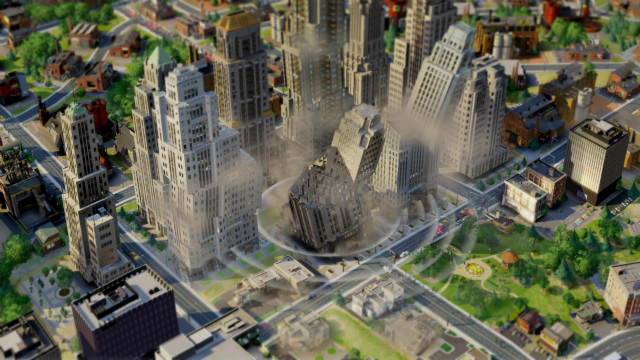
LONGEVITY: How long you play SimCity depends entirely on how deep into it you are willing to go. If you just want to have the odd casual play session, you can, as the game is forgiving when the cityscape is small and the population low. Delve deeper, and SimCity sucks you in and doesn’t let you go. I have lost entire days trying to find the balance between happy Sims and a happy finance minister.
VERDICT: SimCity’s technical achievements are there for all to see. Its simulation of the modern city are as much of a marvel as the cities themselves. It’s the SimCity you grew up with, only with a shiny new coat and a masters degree in statistics. The game strangles your creativity with pitiful map size restriction, though this is somewhat remedied by the ability to play across multiple cities in a wider region. A must play for newcomers thanks to its intuitive tutorial system, but long time players shouldn’t expect a SimCity revolution.



